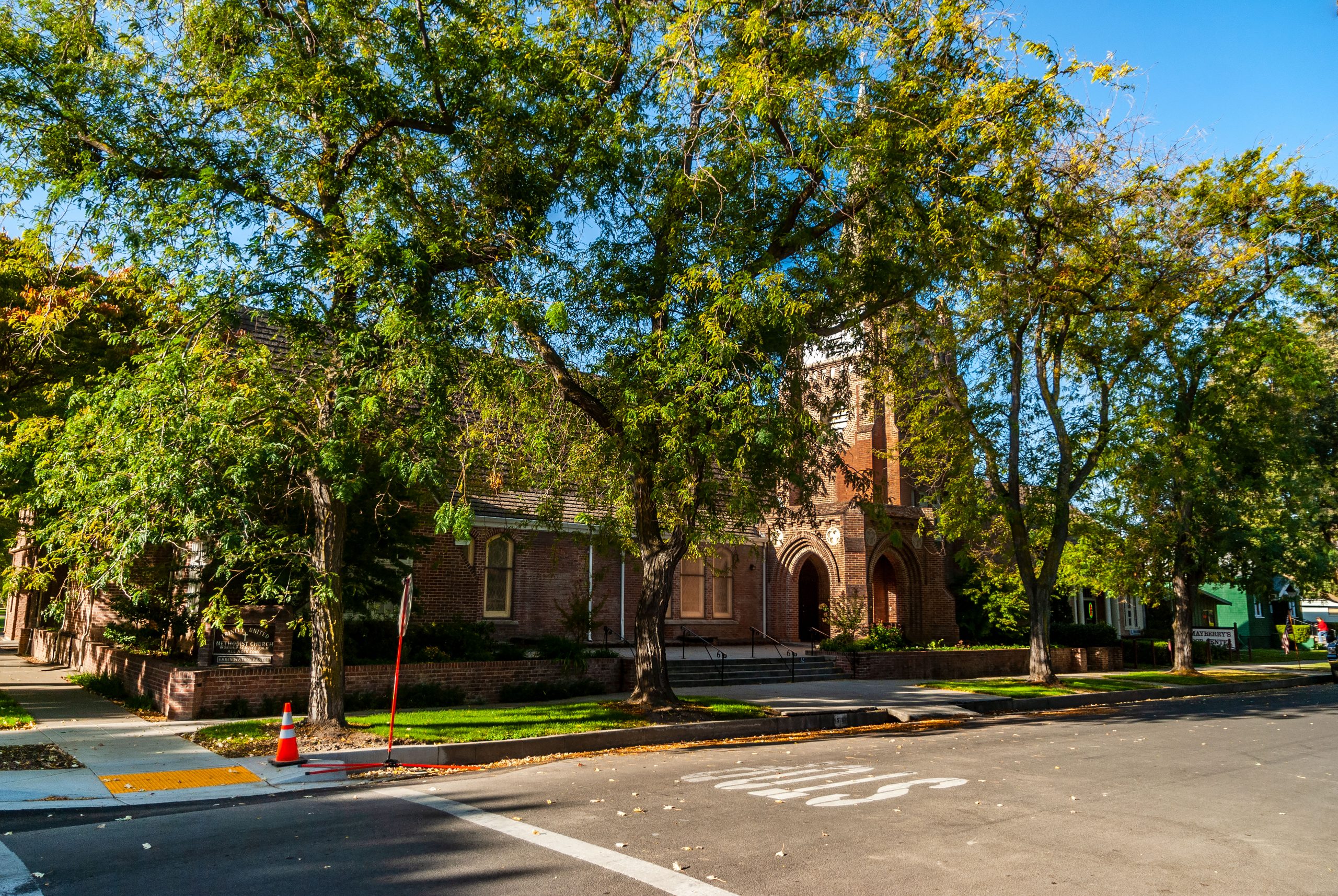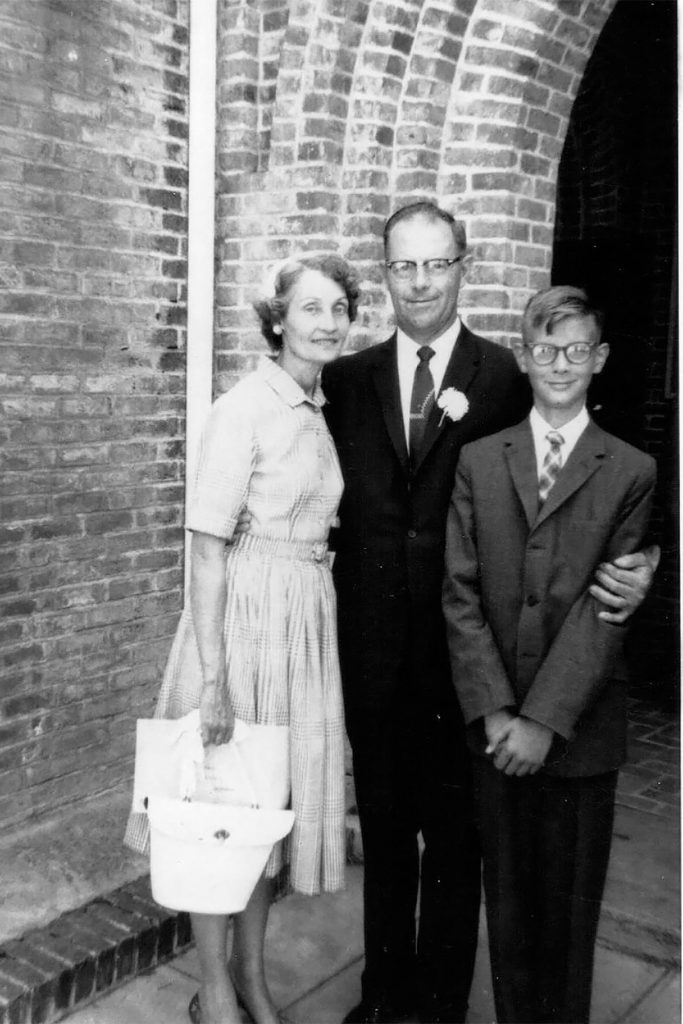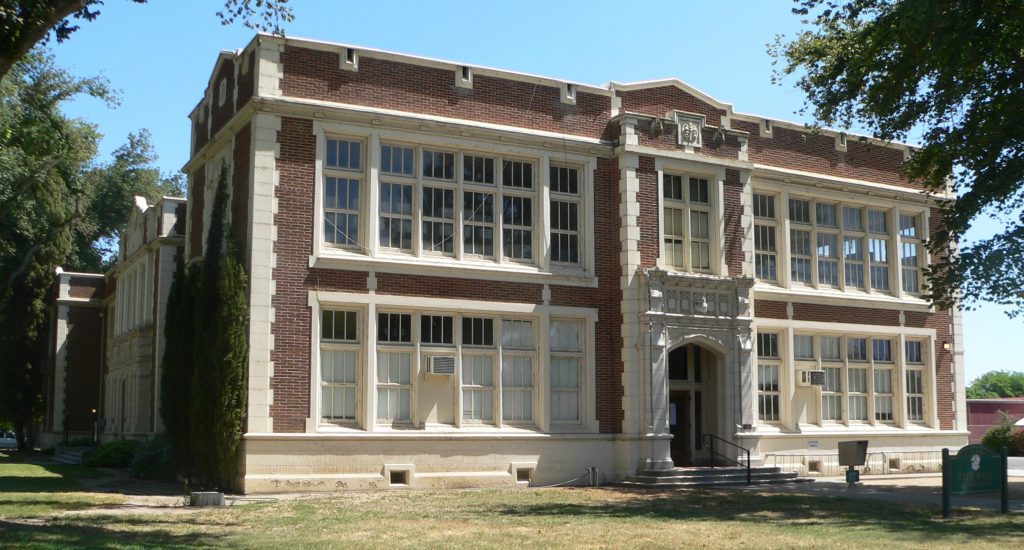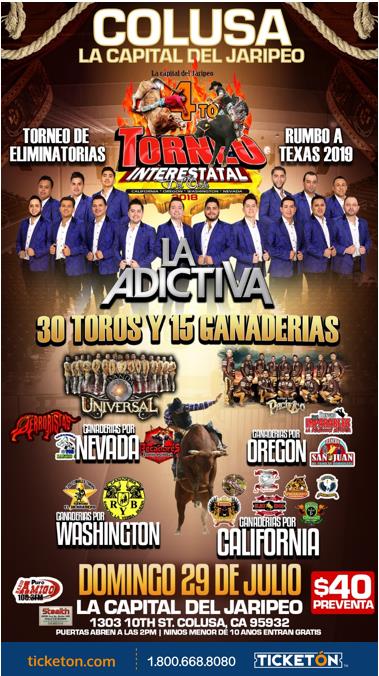Colusa California 1960-62

In 1960, when Poppa turned down Bishop Phillips’ offer to move to Ogden, Utah, he transferred his membership to the California-Nevada Conference of the Methodist Church. With his new appointment, in June, 1960, we moved to Colusa, California. Poppa’s new charge was Trinity Methodist Church, as seen above. According to the 1960 Census, 3,518 people lived in Colusa, the smallest town I had ever lived in. And with that move, we came to know what life in Colusa, California was like.
I said “we moved to Colusa.” Strictly speaking, Poppa and I moved to Colusa. In April or May, Momma had gone to see the doctor. He performed some tests, and called her at home. “I want you in the hospital now!” Momma explained that her family was in the process of moving, and she would come back in two weeks. The doctor was firm. “In two weeks you will be dead.” Momma went into the hospital and Poppa and I moved from Stockton to Colusa, a distance of 115 miles.
Colusa County Agriculture
Located on the Sacramento River, approximately 75 miles upstream from California’s capital, Colusa serves as seat of Colusa County. Predominately agricultural, Colusa produces almonds, English walnuts, prunes, and rice. When I was in 6th grade, Colusa County produced more rice than any other county in the nation save one–Vermillion Parish, Louisiana. The state-mandated crop report for 2017 shows rice production in three areas, Organic Rice, Rice Seed and plain old Rice. The combined total value of rice in 2017 came in at $247,800,000. Not bad, but nowhere near the total for almonds. In 2017, almond meat brought $307,238,000 into the economy, with almond hulls adding $5,198,000. And in a surprise to me, almonds even figure in the Apiary count. The report valued Almond pollination at $22,626,000.
Why do I go into such detail about crop reports? If you live in Colusa County, California, agriculture rules your life. Even when you have no direct connection. In the 1960s, the school year started in late September, later than anywhere else I have lived. Why? Because we don’t want those damned Mexicans in our schools. Wait till the harvest is over and they’ll move on. Then we can start the school year. Need I say that the original white settlers of Colusa County came from the pre-Civil War South? Even the County Court House, now on the National Register of Historic Places, resembles a Southern court house, and by design. As the California Historical Landmark plaque reads, “The ‘Southern’ style reflects the County’s heritage from the ante-bellum South and States-Rights sympathies during the Civil War.”

One more note on almonds
I don’t think we’d lived in Colusa more than a couple of months when I learned that Montana was not in the United States. I was playing with a kid down the street and I mentioned almonds. He jumped on my pronunciation of the word. “I don’t know where you come from, but here in the United States we call ’em a-monds.” Now I can’t really get across his speech without audio, but understand that in the United States, the first syllable of a-mond uses the same a sound as in the word “back.” Or, like a sheep–“baaaaa.” Maybe if I wrote it (b)aaaaaa-mund. (The b is silent.)
The crop report surprised me with the value of English walnuts. We had two English walnut trees in the back yard. There were English walnut trees all along the road on the way home from Junior High. I don’t remember English walnut orchards. I do remember how our fingers turned black when we tried to get the nut out of the fruit. Those green hulls were nasty. I also remember Momma packing up nut meats to send to her family back in West Virginia. Ever the child of the Depression, Momma took the time and effort to free the nut meat from the shell. She would not pay to ship shells.
I remember peach orchards and prune (Italian plum) orchards. Momma got physically ill when she saw peaches rotting on the ground. “Do you know how much I paid for peaches in Montana? And here they let them rot!”
Parishioners

Easter Sunday 1962
Trinity Methodist Church
Colusa, California
Three stories (only) about Poppa’s parishioners.
1) “Do you know how to cook?”
When Poppa and I arrived in Colusa in 1960, one of the church women showed up at the parsonage door. Looking Poppa in the eye, she asked “Do you know how to cook?” When Poppa replied that, yes, indeed, he knew how to cook, the woman stated flatly, “Good! If not, I would have arranged for the church women to bring in meals.”
2) Who chose THAT color?
When we moved to Colusa, the parsonage had a coat of gray paint. Poppa decided to paint the house yellow. A parishioner drove up, stopped, and cornered Poppa. “Who choose THAT color?” she asked. Poppa responded “I did!” “I don’t like it!” she exclaimed. “You don’t have to live in it,” Poppa replied.
3) Paying the Apportionments
One member of the church was on the list of the 50 wealthiest Americans. The church people were slow to pay their tithes, and the collection plate did not cover expenses. In the Methodist church, individual churches have annual fees they must pay to the central church authorities. These funds, called “Apportionments,” serve to fund mission work, college work, yes, the church bureaucracy, and many other services. As one United Methodist Church explains on its website, “91.9% of your giving stays in your church.” Only 8.1% goes elsewhere. In the 1960s, if a church did not send in that 8.1%, the church’s pastor could not count that year toward his retirement.
Colusa never wanted to pay apportionments, and the collection plate reflected that. Poppa would take his salary to pay the fee rather than deplete his retirement fund. When the wealthy rancher learned of this, he offered to “endow the pulpit.” What this means is that he would personally make sure all the church’s financial obligations were met. Poppa refused his offer. “If the church people don’t want to support the church,” he said, “endowing the pulpit will free them from all responsibility.” Somehow, in the end, the parisioners met both Poppa’s salary and the church Apportionments.
School Daze

(Photo courtesy of Ammodramus)
For me, school was a large part of my life in Colusa, California. Last week, I mentioned how I took violin lessons at El Dorado School in Stockton, California. Colusa had no orchestra, and thus no string instrument instruction. My choice would have been to play bassoon, but I figured that without an orchestra, Colusa didn’t need bassoon players. The band instructor looked at me and said “You should play the trombone. You have the embuchure for it.” Now I don’t know just how closely he examined my mouth, but I have always maintained that he meant I had the arms for the trombone. And thus started my seven years of playing trombone.
My teachers
Mr. Dean taught sixth grade at Colusa Grammar School, and found me in his class. I don’t know what Poppa said to Mr. Dean, but the teacher decided that I was too big for my britches. For the entire year, I felt as if Mr. Dean had it in for me. Or maybe it was something else. Years later, at U.C. Berkeley, I ran into Mr. Dean again. He tried to pick me up. I turned him down.
Miss Chalk taught 6th grade English. She also taught Spanish, but in Spanish class, she was Señorita Tiza. (Tiza is how your say “chalk” in Spanish.) I really don’t remember much about Miss Chalk, except that in both English and Spanish she seemed formidable. I should point out that in Colusa, California, we learned Spanish by watching KVIE, Channel 6, educational television out of Sacramento.
Educational Television
Back in the 60s, “educational television” really tried to live up to the name. KVIE (K = west of the Mississippi, VI = 6, E = Educational) offered a number of “educational” programs. The ones that appealed most to me were the arts and crafts shows. I remember learning Origami by watching KVIE. You could order special supplies from the station, and with their supplies, I studied Japanese Brush Painting.
This came in handy when Mrs. Burchfield, the wife of Colusa Grammar School’s Prinicipal and our art teacher, assigned the annual Smokey-the-Bear poster. Surely you remember having to do one of those “Only You Can Prevent Forest Fires” posters. We used chalk, I believe, in Mrs. Burchfield’s class. When she saw my blackened tree stump with a Japanese Brush Painted bird on top, she all but screamed at me. “What kind of bird is that?” She then wiped my bird off the paper, and drew in a 1960s cartoon version of Woodsy Owl. “It doesn’t have to be any special kind of bird, you know.” And that’s when I started hating art class.
We Want To Move
My parents were strong supporters of education. In Billings, they had hired a student at Rocky to teach me French and Russian. They were not happy with the Colusa schools. “We can’t afford the best teachers,” the townsfolk told my parents. Momma’s response was “How can you afford anything but the best?” Remember, this was a very wealthy farming community. When the District Superintendent showed up at the end of our first year, he asked my folks “How do you like Colusa?” In unison, Momma and Poppa said “We want to move.” The D.S. responded “You haven’t given it a chance.”
Year Two
Our second year of life in Colusa, California, was much like the first. More financial struggles at the church. More educational struggles at Colusa Intermediate School. Two events stick out in my mind, one good, one not so.
- When the school year started for seventh grade, our English teacher had not received her “teacher’s manual.” I turned in an assignment with something other than what she expected. She didn’t know how to grade me, because, she said, “I don’t have the teacher’s manual.” Why would a 7th grade English teacher need a manual to know if a seventh grader had done the homework correctly. (That was the “not so good.”)
- On the other hand, my 7th grade Science (and Art, yeah, I know) teacher answered a question about evolution and the Bible. Without missing a beat, he responded “The Bible tells us that God created the world in six days. What the Bible doesn’t tell us is what a day is to God.” I’ve never forgotten that lesson. On the other hand, one day I missed my school bus because I stayed after Art class to help clean up the room. The teacher told me, “Don’t be surprised by your grade this quarter.” He rewarded me for helping out, not for being an artist. I continued to hate art class.
At the end of the second year, the D.S. returned to ask, again, “How do you like Colusa now?” As one, my parents replied “We want to move.” And move we did. In June, 1962, the Bishop appointed Poppa to the El Cerrito Methodist Church and we moved to the San Francisco Bay Area.
A kid’s social life in Colusa
If school and church life were disappointing, I had the best social life I’ve ever had. Yeah, that one kid picked on me, but for some reason, the cool kids accepted me as one of theirs. I went to more parties in Colusa than ever before or since. In 7th grade, I attended parties at the Country Club. I had friends with whom I rode my bike out into the country. Friends to picnic with on the Sacramento River which flowed by the town. I had friends to meet at the malt shop after school. I can still taste those cherry cokes they served. Nowhere else I’ve lived have I had such a rich social life. I missed that in El Cerrito.
Colusa California Weather
As I said above, Colusa lies on the Sacramento River in the northern part of California’s great Central Valley. Winters are rainy and wet. Summer heat blasts everything in sight. The day we left Colusa, we had the air conditioning on in the house. Of course we did. We had had twenty-one days straight with the temperature over 100 degrees Fahrenheit. And it was mid-June. With the doors open for the movers, the thermometer inside the house read 104. We moved to El Cerrito and froze.
Guest Site of the Day
Who knew that there was so much you could write about rice. The California Rice Commission has its own blog devoted to, what else, rice. Recipes, farming practices, even raising salmon in the rice paddies. Check out the CalRice Blog. After all, rice is an important part of life in Colusa, California.
Recipe of the Day
With all that talk about agriculture above, you think I’d give you a recipe that doesn’t incorporate at least one Colusa County product? Calrice.org has a website devoted to all things Rice, especially if it’s California-grown rice, and, of course, they provide recipes. Today my recipe comes from them in the form of Sesame Beef Rice Bowls. I feel this especially pertinent as the first “Chinese” meal I remember eating came from a Colusa, California restaurant.
Video of the Day

Looking for a youtube video focusing on Colusa, California, one thing amazed me. Yes, there were plenty of videos looking at the agricultural life in Colusa County. There was even a video that takes the viewer through the Colusa City Hall, the building where I attended sixth grade. Yes, back in 1918, the Colusa Grammar School came into existence and that building is now on the National Register of Historic Places. It also serves as City Hall, but in the video, the building looks deserted and derelict. Obviously filmed on a weekend or holiday, no people appear in the video, just empty hallways, locked doors, and badly water-stained ceilings.
No, the number of videos in Spanish surprised me. Even more than that, the number of videos recording an event new to me, the Jaripeo. Apparently, Colusa is the “Capital” of the Jaripeo, even though a google search says that the event began in central and southern Mexico in the 16th Century. A forerunner of today’s rodeo, the Jaripeo is a combination of bull riding, dancing, and Oktoberfest. Folks drink a lot of beer at a Jaripeo. And so, because I found something new, I want to share it with you. Besides, there are lots of very handsome men who appear in the video, some of them crazy enough to jump onto the back of a bull. Apparently, this, too, is life in Colusa, California. Today’s Video of the Day is all in Spanish. Señorita Tiza would be proud.
At the close of the day
I have much more I could say about life in Colusa, California. But I feel you get the picture. I had a grand time, although our time there may have harmed my educational advance. Such was my life in Colusa, California in the early 1960s. The editorial calendar says that tomorrow we look at domestic travel. We will head back to Washington State and drive around Thurston County. See ya then
TTFN
![]()

Like!! Thank you for publishing this awesome article.
Thank you.
Hi, i read your blog from time to time and i own a similar one and i was just curious if you get a lot of
spam remarks? If so how do you prevent it, any plugin or anything
you can advise? I get so much lately it’s driving me insane so any
assistance is very much appreciated.
I cannot tell you how many spam remarks I get. I have no good suggestions for avoiding it. I believe that Aksimet has something that is supposed to control spam, but I haven’t tried it. Most of my spam seems to come out of Russia. Bryan
Hi there! I could have sworn I’ve visited this web site before
but after looking at a few of the articles I realized it’s new to
me. Anyhow, I’m certainly pleased I stumbled upon it and I’ll
be book-marking it and checking back regularly!
Thank you for spending time with my work. I hope you continue to find it worthwhile, and please consider subscribing so that you know when I have posted something new. Bryan
Hi all, here every one is sharing these kinds of experience,
thus it’s fastidious to read this blog, and I used to pay a quick visit this web site all the
time.
Thank you. –Bryan
i love this appropriate post
Thank you. –Bryan
Bryan,
Thanks for for your essay on Mr. Dean’s class at Colusa Elementary School. (Your comments about Mr. Dean explained a lot.)
I remember befriending a Bryan Spellman who lived in Butte Vista who was slender and tallish PK …
Doug Ash
Doug,
That was a great many years ago. What are you doing now?
Bryan